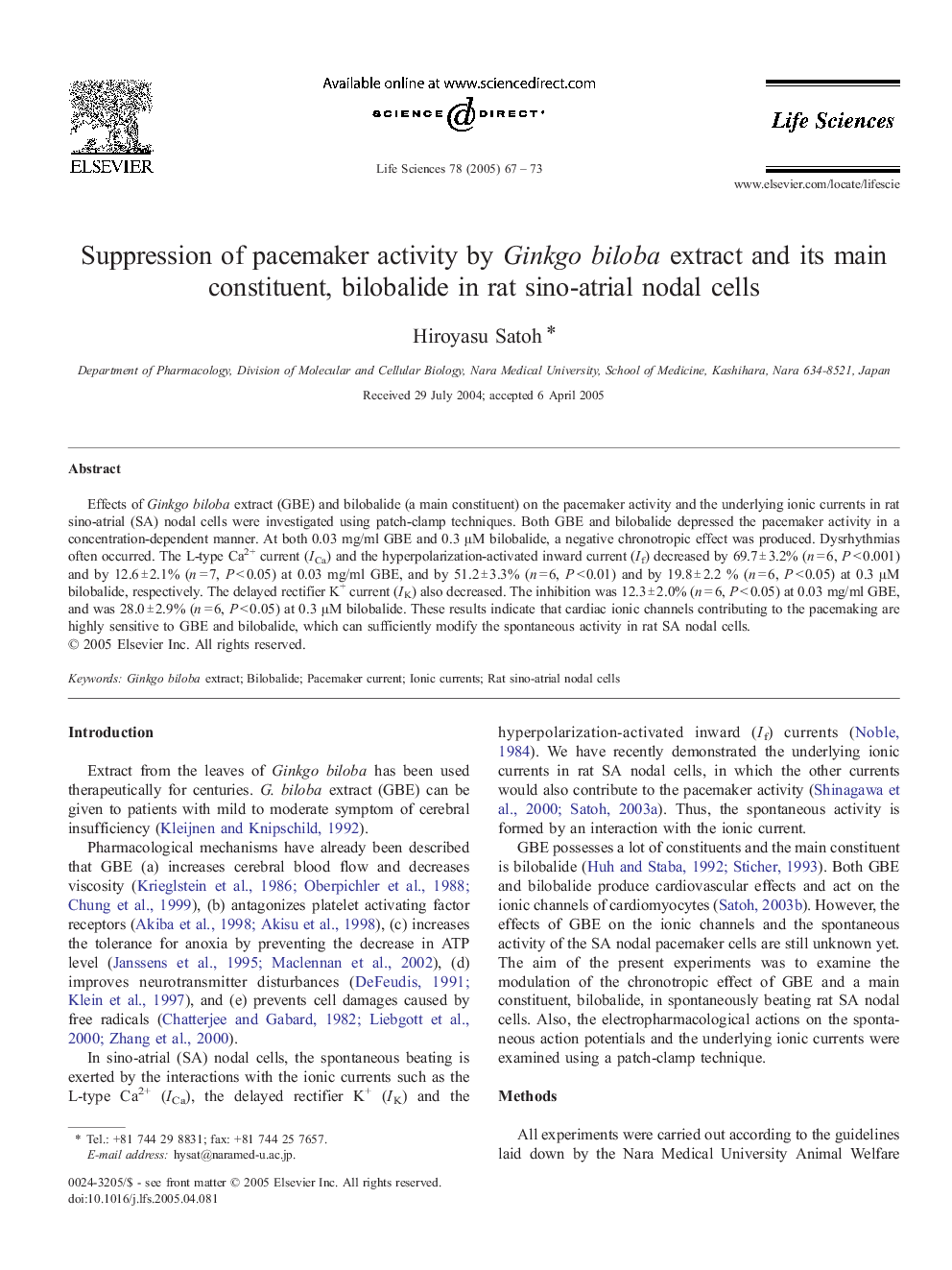| Article ID | Journal | Published Year | Pages | File Type |
|---|---|---|---|---|
| 9012936 | Life Sciences | 2005 | 7 Pages |
Abstract
Effects of Ginkgo biloba extract (GBE) and bilobalide (a main constituent) on the pacemaker activity and the underlying ionic currents in rat sino-atrial (SA) nodal cells were investigated using patch-clamp techniques. Both GBE and bilobalide depressed the pacemaker activity in a concentration-dependent manner. At both 0.03 mg/ml GBE and 0.3 μM bilobalide, a negative chronotropic effect was produced. Dysrhythmias often occurred. The L-type Ca2+ current (ICa) and the hyperpolarization-activated inward current (If) decreased by 69.7 ± 3.2% (n = 6, P < 0.001) and by 12.6 ± 2.1% (n = 7, P < 0.05) at 0.03 mg/ml GBE, and by 51.2 ± 3.3% (n = 6, P < 0.01) and by 19.8 ± 2.2 % (n = 6, P < 0.05) at 0.3 μM bilobalide, respectively. The delayed rectifier K+ current (IK) also decreased. The inhibition was 12.3 ± 2.0% (n = 6, P < 0.05) at 0.03 mg/ml GBE, and was 28.0 ± 2.9% (n = 6, P < 0.05) at 0.3 μM bilobalide. These results indicate that cardiac ionic channels contributing to the pacemaking are highly sensitive to GBE and bilobalide, which can sufficiently modify the spontaneous activity in rat SA nodal cells.
Related Topics
Health Sciences
Medicine and Dentistry
Cardiology and Cardiovascular Medicine
Authors
Hiroyasu Satoh,
